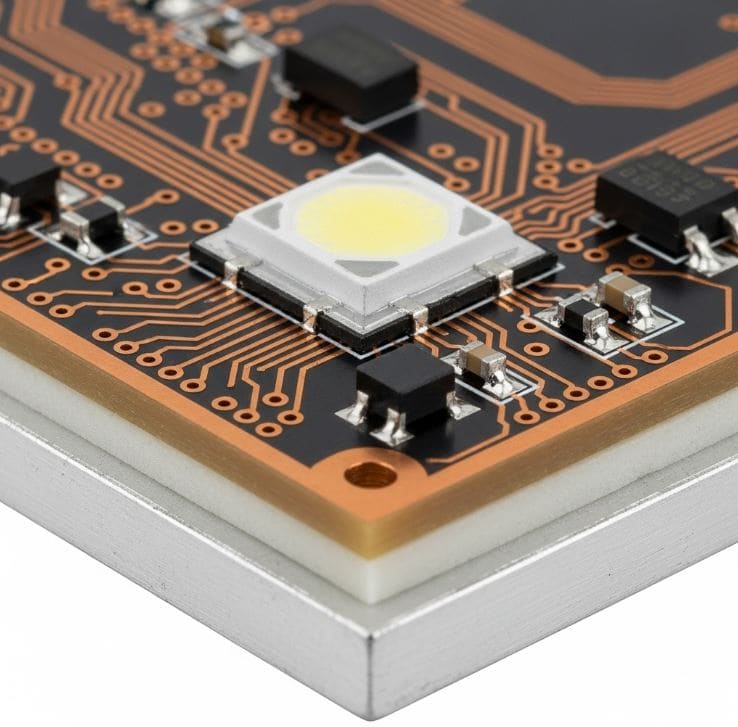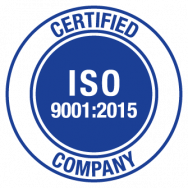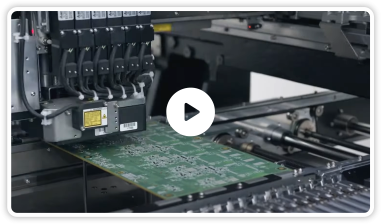Rush PCB Inc makes thermal clad printed circuit boards or PCBs using aluminum and copper metal substrates. Thermal clad printed circuit boards offer minimum thermal impedance, while conducting heat more effectively as compared to that by standard printed boards. Thermal clad PCBs, also known as metal core PCBs, are mechanically more robust compared to direct bond copper and thick-film ceramic constructions.
Allowing simplified design, thermal clad boards are a cost-effective solution that eliminate components to allow devices to be made smaller. Overall, metal-core PCBs have fewer complications, resulting in simpler production processes. Apart from this, use of thermal clad substrates also results in lower operating temperatures of electronic components, thereby resulting in improved durability and longer component life.
For thermal clad boards, the technology resides in the dielectric. A review of the performance characteristics of thermal clad dielectric shows that it is resistant to degradation from exposure to high temperatures, and has a high dielectric breakdown characteristic. For instance, a typical dielectric would have a thermal resistance of 0.11 °Cin2/W or (0.71 °Ccm2/W) and a high thermal conductivity of 0.1 W/m-K.
Applications of thermal clad PCBs include high temperature applications like power conversion, LED applications, solid state relays, solar receivers, heat rails, and motor drives. These boards are lead-free solder compatible, RoHS compliant, Eutectic Aush compatible, and environmentally green.

Thermal Clad Printed Circuit Board
Thermal clad or metal core PCBs are double-sided plated through hole or PTH boards that combine traditional substrate board materials like Teflon or FR4, with a copper foil on one side and a layer of metal such as aluminum or copper on the other.
PCB manufacturers use lamination presses to laminate the dielectric layer to a metal core. In most cases, the copper foil requires printing the circuitry before the lamination. Aerospace and defense industries requiring advanced technologies use multiple lamination cycles for managing blind and buried vias.
The purpose of the metal is to absorb heat from a hot component on the copper foil side of the board. The heat travels through the substrate material, and the high heat conductivity of the substrate material helps in the process.
There are multilayer thermal clad PCBs also, with the extra layers distributed evenly on each side of the metal core. For instance, a 12-layer board would have the metal core layer at the center, with six layers on its top side and another six layers on the bottom. The different layers on a simple metal core board are:
- Solder mask
- Copper circuit layer — 1 to 6 oz. (1 to 2 oz. most common)
- Dielectric substrate layer
- Metal core layer acting as heat sink or heat spreader
Why use Thermal Clad PCBs?
High power electronic components may generate too much heat, leading to malfunction of or damage to the device. It may not be always possible to cool them using conventional methods like fans. Cooling by conducting heat through a metal core board is not only a simple, but also an effective solution. Conduction cooling works by transferring the heat from one part of the PCB to another part through materials in direct contact. This works as it is a property of heat that it always moves from a hot area to another that is cooler.
Benefits of Thermal Clad PCBs
Modern electronics mainly requires high-speed circuitry. Although many materials have low Dk or dielectric constant, and low loss properties, they do not have good thermal properties. It is possible to increase the copper weight on the copper foil side to increase the heat transfer, but that would also increase the cost of the PCB substantially. Via connections between different layers would also be of complicated design, increasing their susceptibility to failure.
Adding a metal core allows using conventional thickness of copper foil. This makes it possible to have multiple plated through holes to connect with the metal core, thereby dissipating the heat evenly.
The thermal clad PCB provides a simple method of achieving thermal stability. The metal core removes excess heat by conduction through the substrate. For additional efficiency, it is possible to add an extra heat sink to the metal core. However, it is necessary for the designer to match the coefficient of thermal expansion of all the materials going into making the thermal clad PCB.
The metal core adds extra rigidity to the PCB, which helps it to withstand substantial amounts of shock and vibrations.
Conclusion
With the growing demand of PCBs that can handle high power electronics while supporting high component density, the use of metal core thermal clad boards has gone up. According to Rush PCB Inc, these boards help substantially in thermal management.
For more information, please contact us now.









